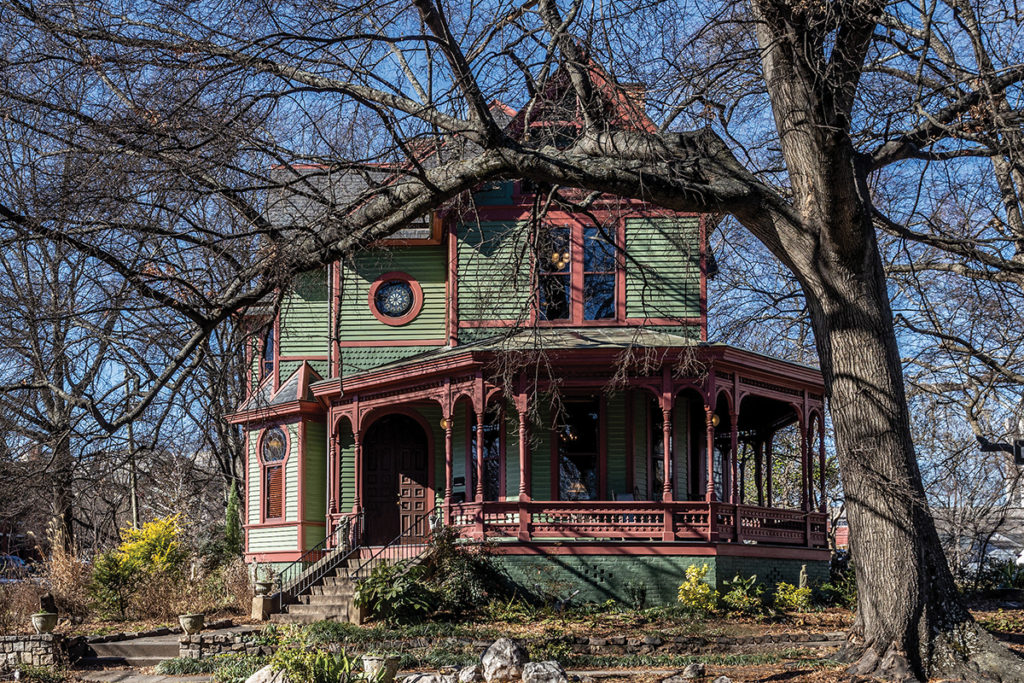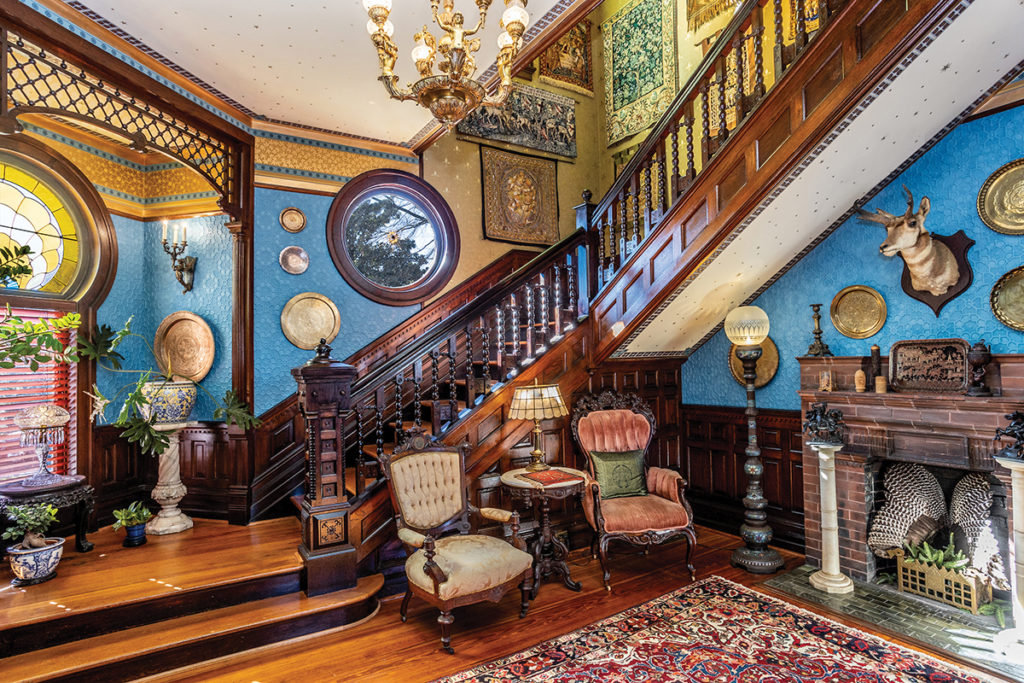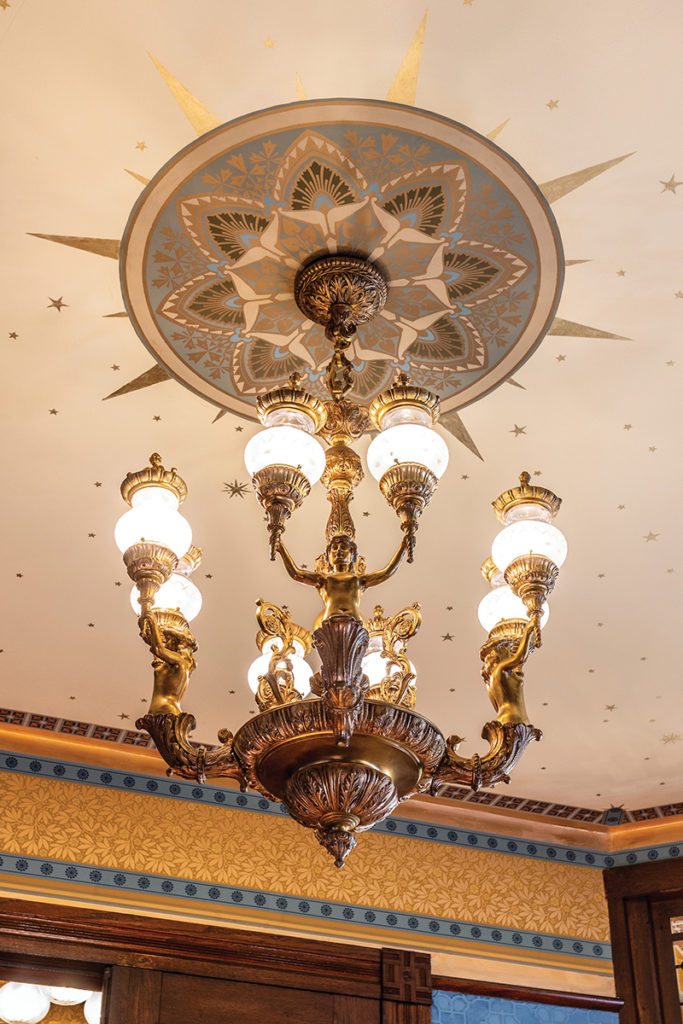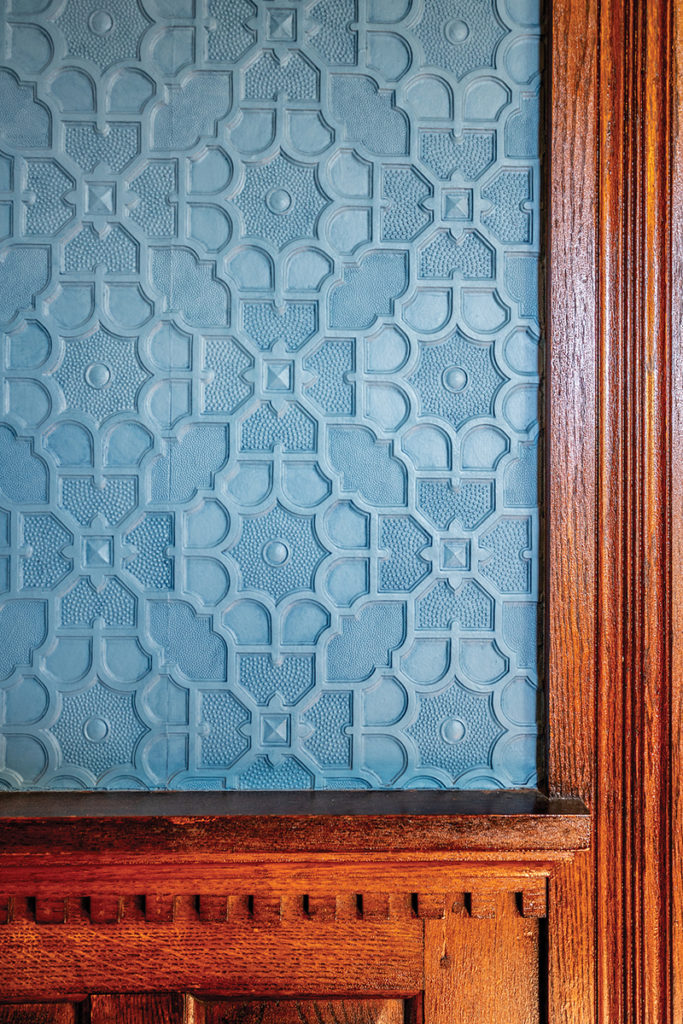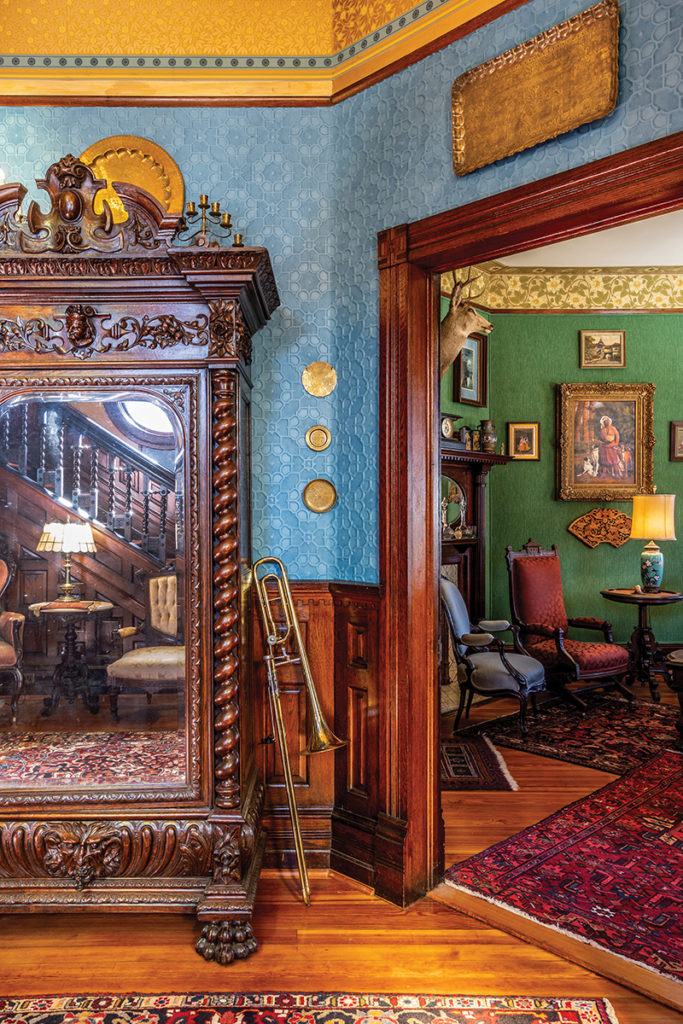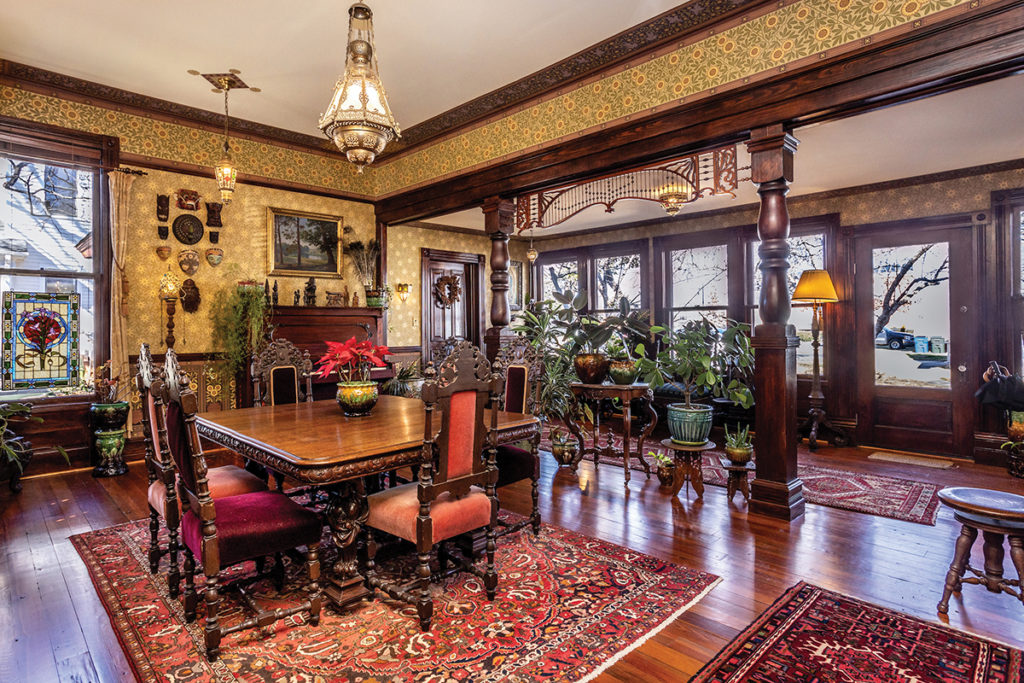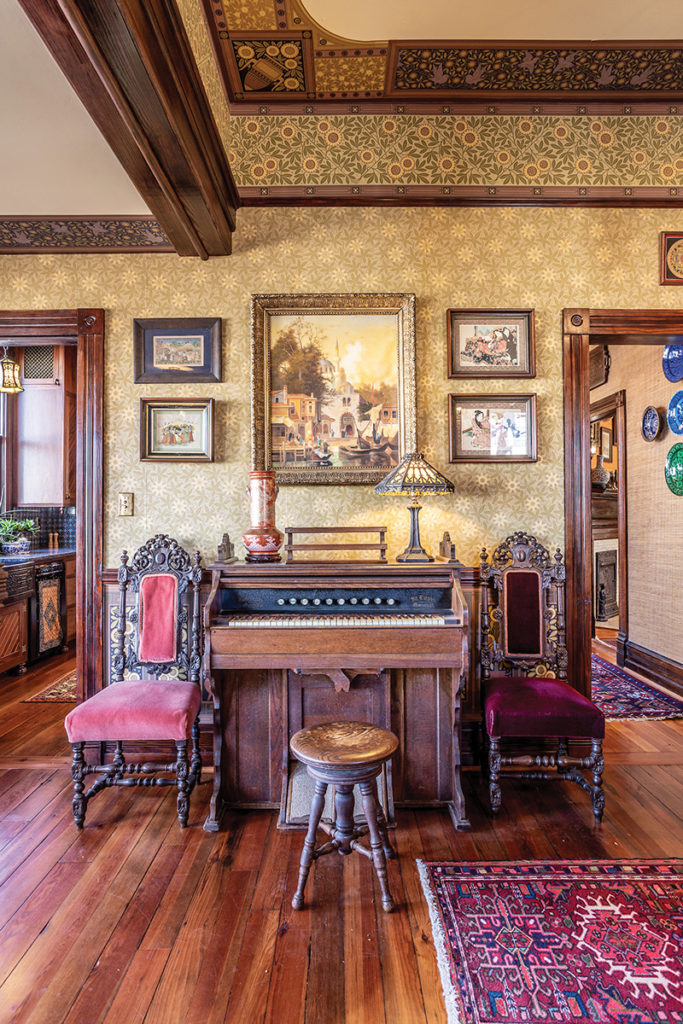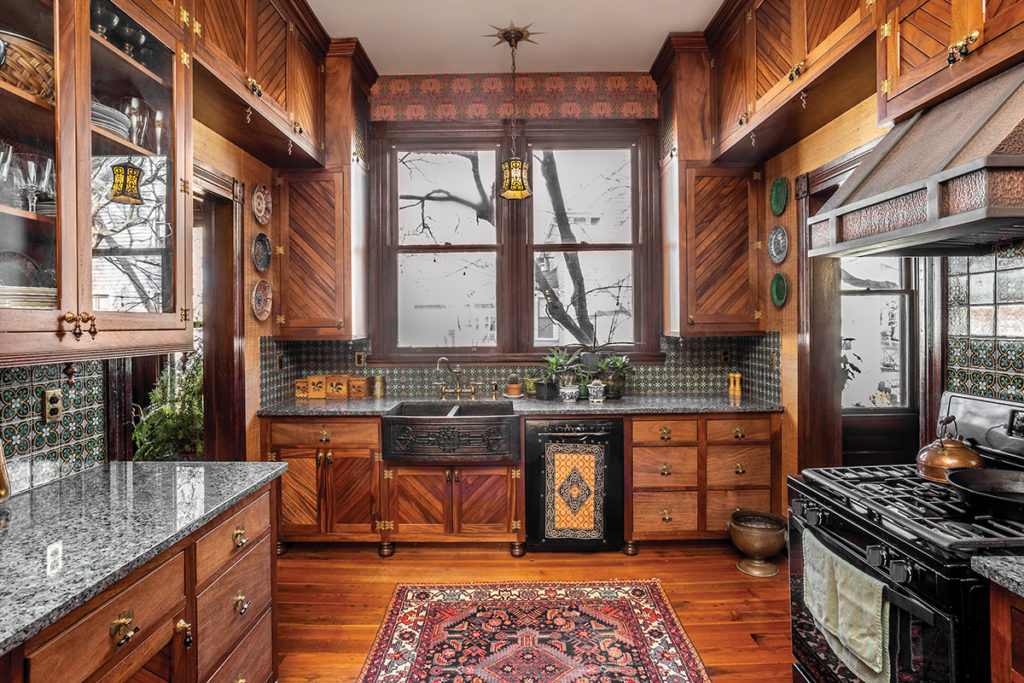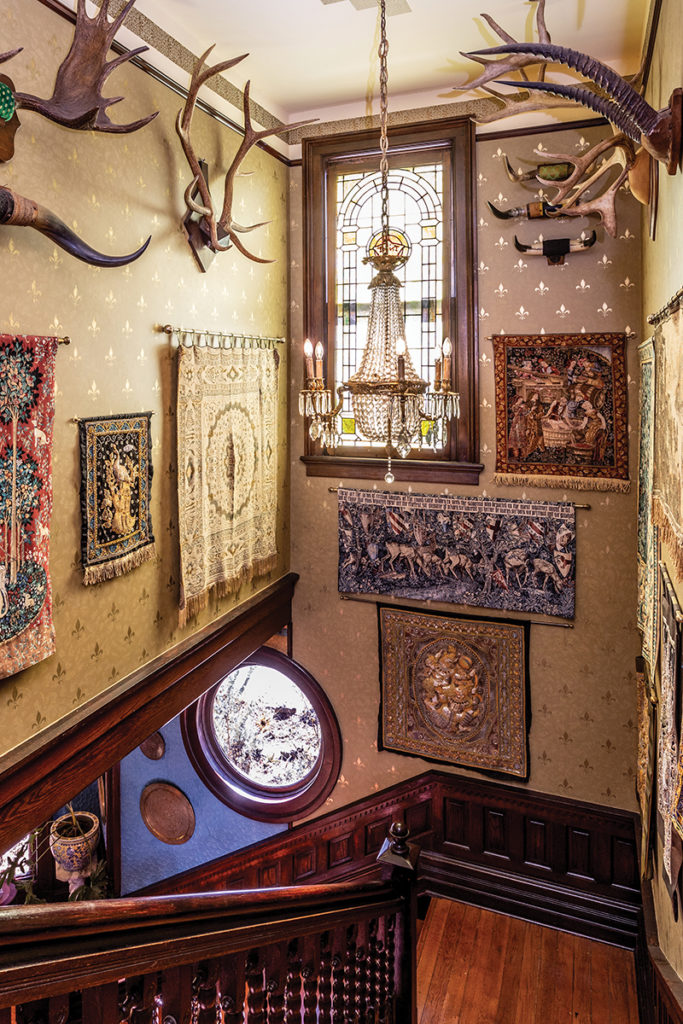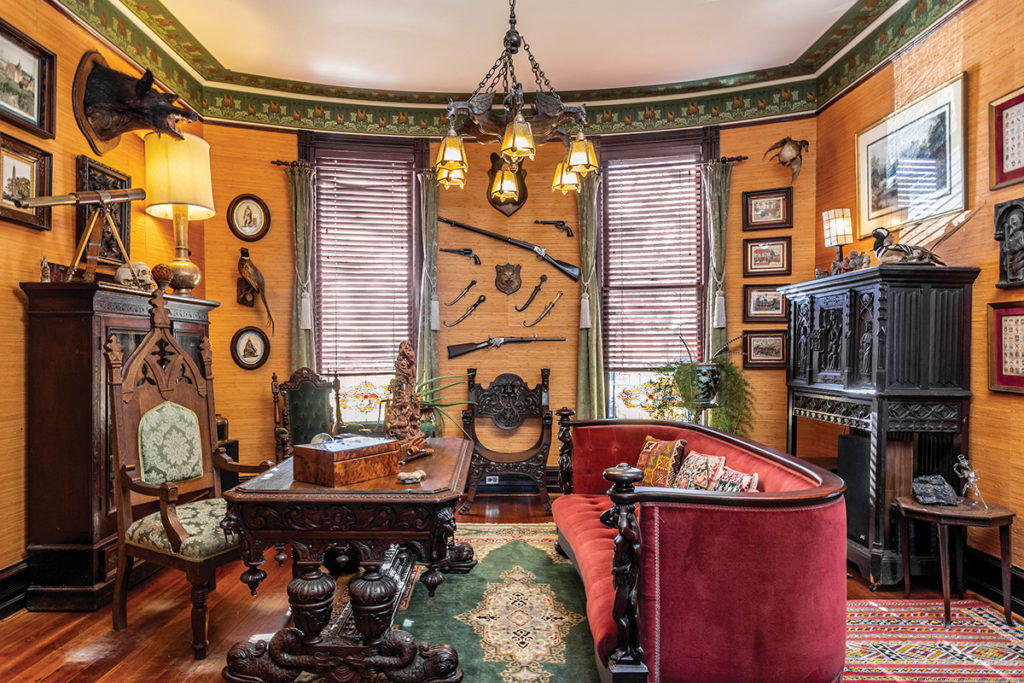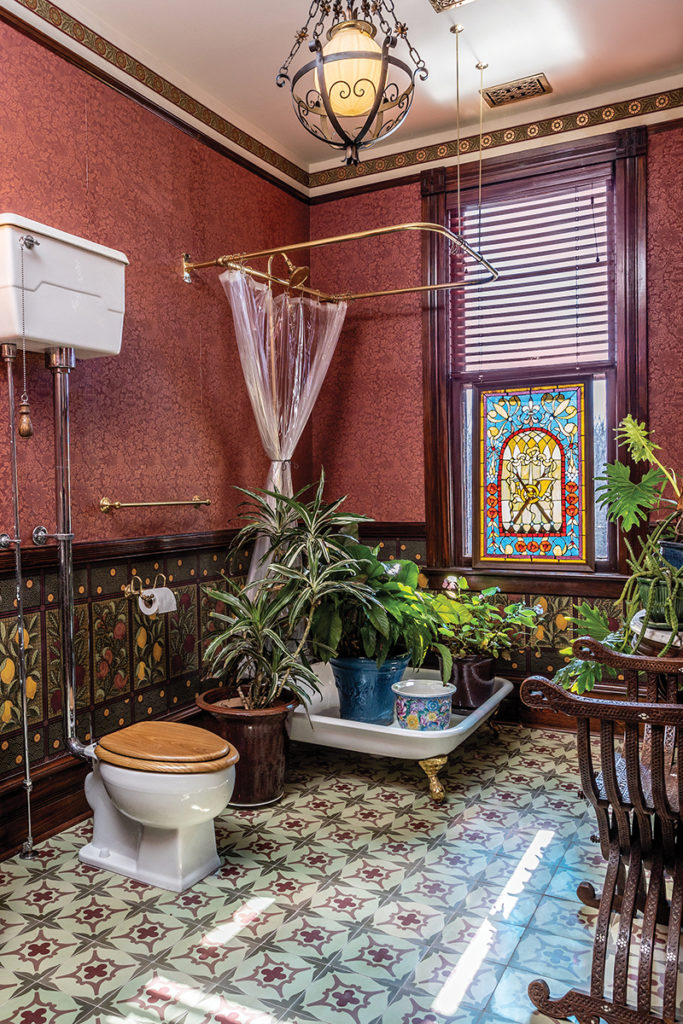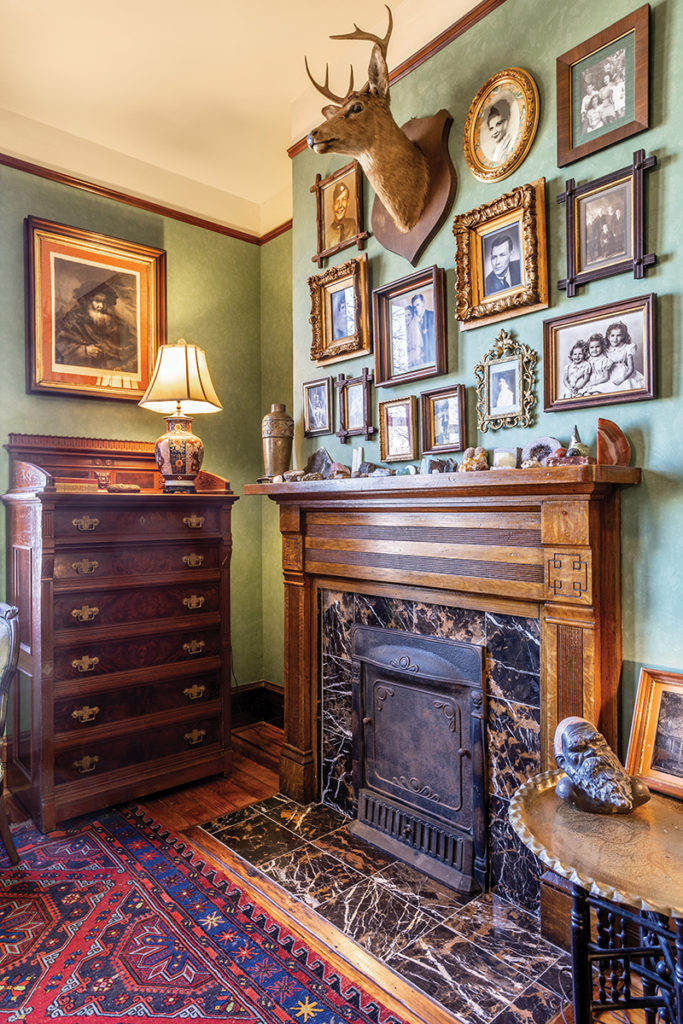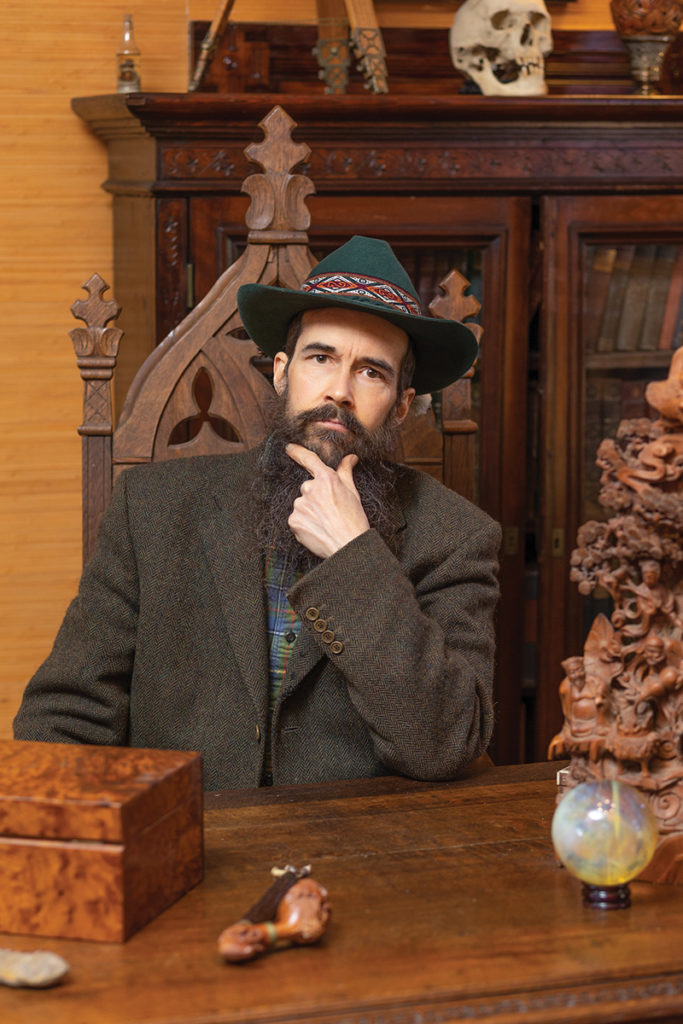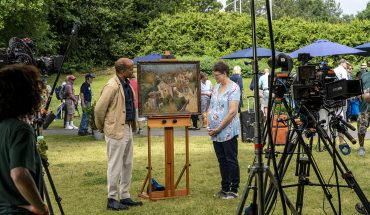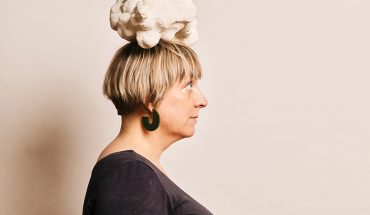A longtime Oakwood resident and historian transformed the dilapidated Lamar Hall into a showcase for his collection artifacts.
by Katie Pate | photography by Trey Thomas
Driving down Person Street, chances are you’ve noticed Lamar Hall. Perched at the edge of Historic Oakwood, the home’s towering green-and-red exterior, prolific garden and ornate wooden spindlework make it one of the district’s most iconic properties.
But even as intriguing as the home’s Queen Anne-style architecture is its owner, Matthew Brown. A tenured Oakwood resident, Brown moved to Raleigh after law school in the 1980s, then made a career here as a teacher and historian, authoring several books about the Civil War. Six years ago, Brown launched what just might be his greatest project yet: restoring the historic structure.
“I always just loved historic architecture, since I was kid,” Brown says. His fascination with the home was sparked decades ago when he noticed it falling into disrepair. After changing hands several times since its construction in 1896, the state government had acquired Lamar Hall as part of a plan to convert several historic homes to offices, but never finished the project. Brown had his eye on the vacant residence, hoping to one day make it his own. “I’d been looking in the windows for years before I bought it,” he admits.
Impatient with the bureaucratic pace of selling the homes, Brown took matters into his own hands: “I lobbied the government for years and even made signs asking Governor McCrory to please sell these houses. I put them in front of the homes in the middle of the night.” His efforts worked, and in 2016 he purchased Lamar Hall following a government auction. He wasted no time turning the dilapidated building into the space of his dreams.
“Before we started work on the house, I invited everybody I knew to come view it,” Brown says. “Over 100 people showed up!” What visitors saw was a home that was, he says, “frozen in time.” After sitting empty for so long, Lamar Hall had started to decay: roof leaks, peeling wallpaper and rotten siding made the space less than livable.
“For a while there were about six people working full time to update the house,” Brown says of the team of carpenters, painters, electricians, masons and other professionals who helped bring his vision to life.
The restoration project took three years, during which Brown leveraged a keen design eye to bring the home to its original prominence. Though he made some structural changes during the renovation, like combining several smaller rooms into larger living spaces, he was adamant about preserving much of the home’s authenticity, including the interior woodwork with its original finish. “I’m not gonna paint everything white — sorry!” he laughs.
Today, stepping inside is like a step back in time. Brown’s eclectic and dramatic style brings together sensationally curated design and memories of bygone eras.
In his office, for example, one can find a velvet sofa with delicately carved depictions of Adam and Eve situated beneath a chandelier showing flying dragons and floral art nouveau wallpaper.
Art and artifacts of all provenances abound, much of it sourced on his travels. “People from the Victorian period collected things from all over the world,” he says of the encyclopedic décor.
“I’ve found some of my favorite things in China, Japan, India, Peru and Mexico. Those countries have all of this wonderful handmade art.” Each room boasts a myriad of global furnishings, from wallpapers, tapestries and rugs to vases, paintings and prints — each handpicked by Brown.
“I didn’t have any help with the interior design, even though I had lots of offers,” he says.
During events like the Historic Oakwood Candlelight Tour, Brown opens Lamar Hall to the public. Resounding awe is the typical reaction, especially when patrons notice some of his unusual belongings. “Visitors are sometimes taken back by the skull collection and things like that, but that’s what people had in their homes back then,”
Brown says, referencing the brigade of animal heads displayed throughout his home. “People enjoy seeing the house. It’s not like anything they are accustomed to.”
Active in the local historic preservation community, Brown is the longest standing member of the Society for the Preservation of Historic Oakwood and has worked as an advocate for the preservation of other historical buildings in town.
This year, Brown plans to continue his international travels in Vietnam, where he hopes to find new treasures to showcase and share with others. “My purpose in life is to make the world more beautiful,” says Brown. “Lamar Hall is the fruit of thousands of hours of joyful creation.”
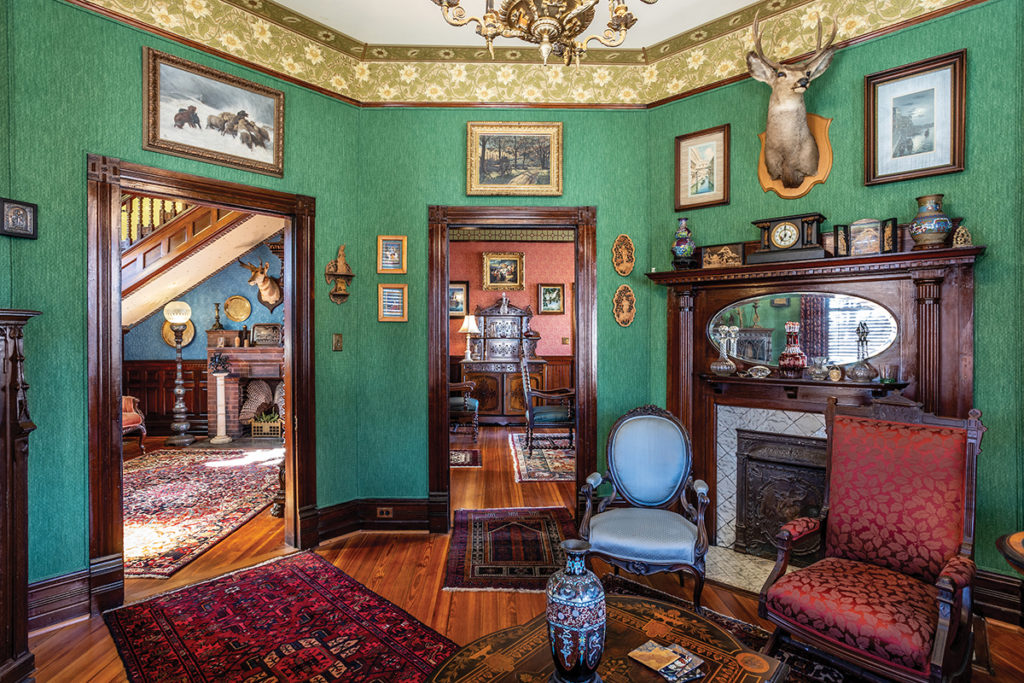
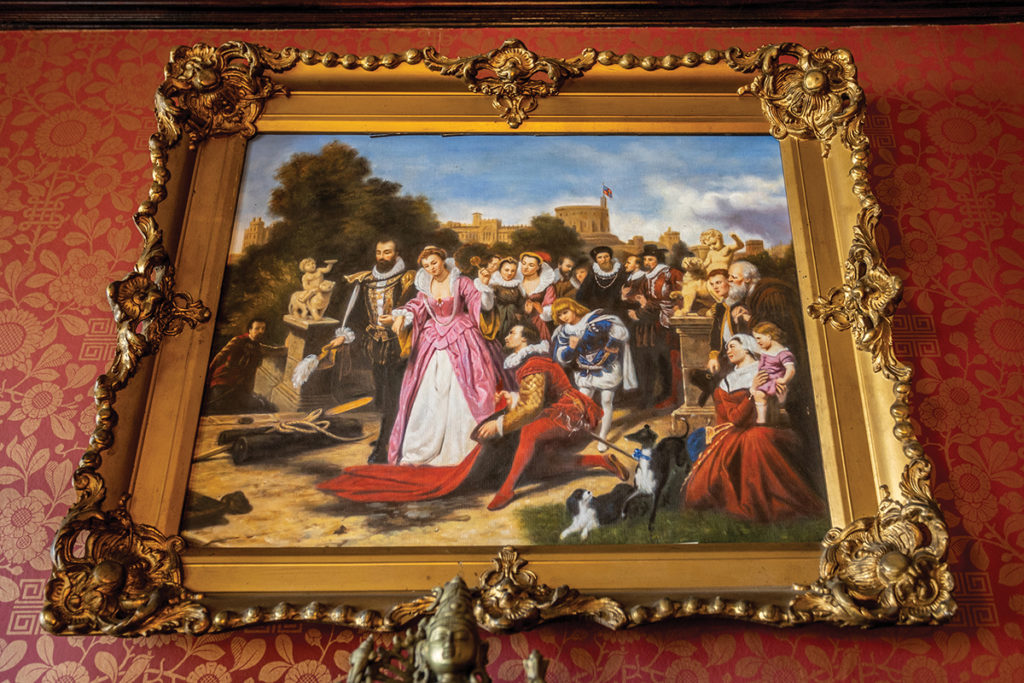
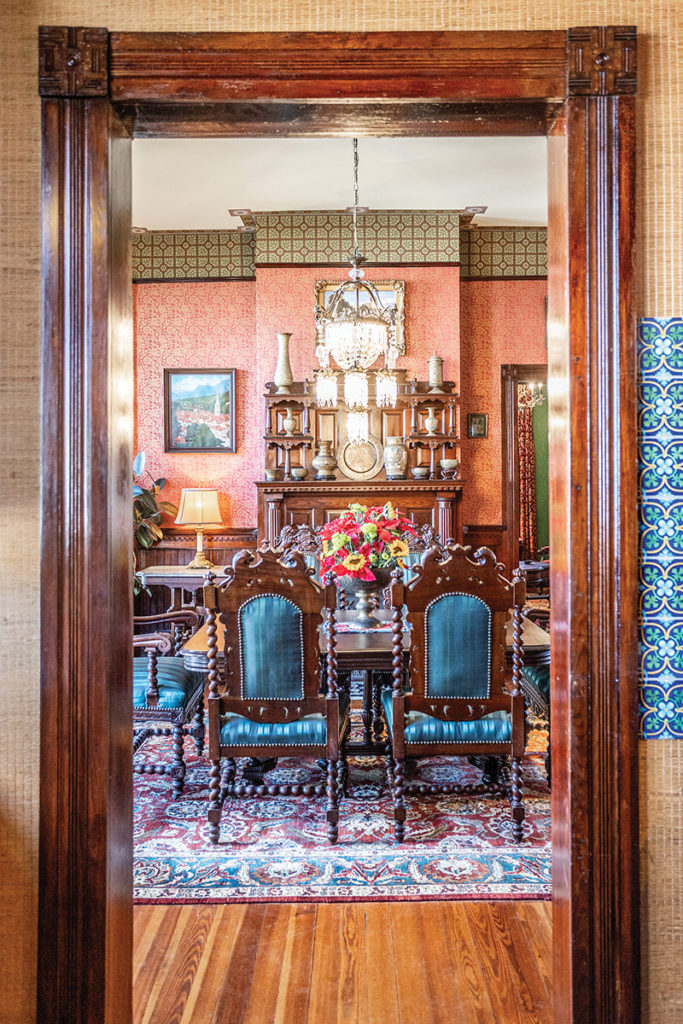
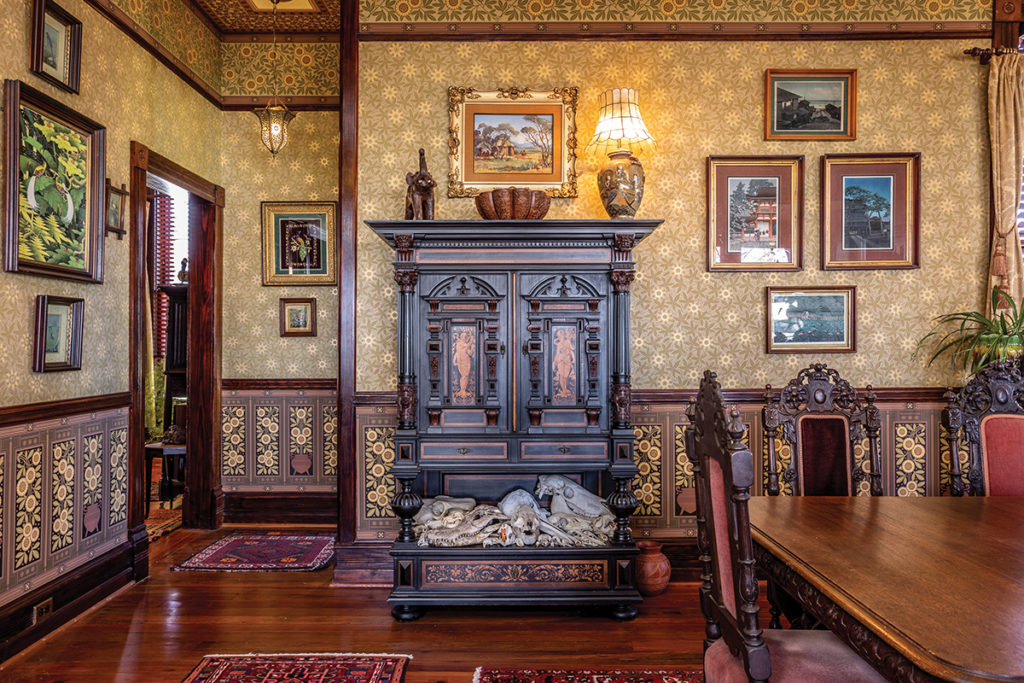
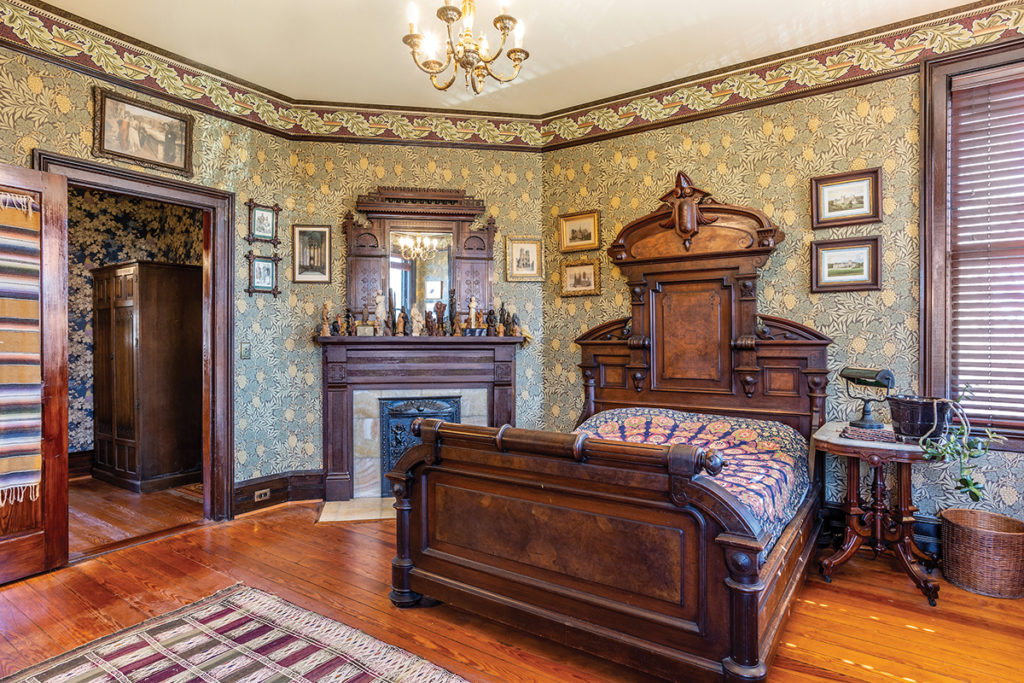

This article originally appeared in the March 2023 issue of WALTER magazine.

